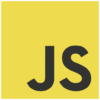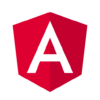Front-End Development
UI/UX development
From catching the eye to driving revenue worth millions, UI/UX plays a key role in your business strategy. We convert your app functionalities into customer-centric intuitive designs with design language systems that preserve consistency across devices and platforms with our expert frontend web development services.
Web app interface development
88% of customers never return to a website after a bad experience. With usability at the forefront, our skilled frontend devs compliment your web app’s robustness with an equally pleasing and snappy interface that keeps bringing back the customers.
Single page application development
Complex web apps with hundreds of pages are a navigational nightmare for your users. We use advanced frameworks and best development practices, and enable you to bring all the value to a scalable, fast-loading, and highly interactive single page application.
Legacy frontend modernization
Your age-old frontend is making you bleed on the maintenance end and losing your customers left and right. Make your UI/UX impressionable, intuitive, and fresh with our customer-centric legacy frontend modernization services.
Our Approach to UI/UX
Empathise
The first stage of the process is spent getting to know the user and understanding their wants, needs and objectives. This means observing and engaging with people in order to understand them on a psychological and emotional level. During this phase, the designer seeks to set aside their assumptions and gather real insights about the user. Learn all about key empathy-building methods here.
Define
Designers will hold ideation sessions in order to come up with as many new angles and ideas as possible. There are many different types of ideation technique that designers might use, from brainstorming and mindmapping to bodystorming (roleplay scenarios) and provocation — an extreme lateral-thinking technique that gets the designer to challenge established beliefs and explore new options and alternatives. Towards the end of the ideation phase, you’ll narrow it down to a few ideas with which to move forward. You can learn about all the most important ideation techniques here.
Ideate
Designers will hold ideation sessions in order to come up with as many new angles and ideas as possible. There are many different types of ideation technique that designers might use, from brainstorming and mindmapping to bodystorming (roleplay scenarios) and provocation — an extreme lateral-thinking technique that gets the designer to challenge established beliefs and explore new options and alternatives. Towards the end of the ideation phase, you’ll narrow it down to a few ideas with which to move forward. You can learn about all the most important ideation techniques here.
Prototype
A prototype is basically a scaled-down version of the product which incorporates the potential solutions identified in the previous stages. This step is key in putting each solution to the test and highlighting any constraints and flaws. Throughout the prototype stage, the proposed solutions may be accepted, improved, redesigned or rejected depending on how they fare in prototype form. You can read all about the prototyping stage of Design Thinking in this in-depth guide.
Test
After prototyping comes user testing, but it’s important to note that this is rarely the end of the Design Thinking process. In reality, the results of the testing phase will often lead you back to a previous step, providing the insights you need to redefine the original problem statement or to come up with new ideas you hadn’t thought of before. Learn all about user testing in this guide.
Feedback and Launch
Incorporating feedbacks from business and inner circle teams. Launch and continuous testing.
Our Expertise
JavaScript

React.js

Vue.js

Angular.js

